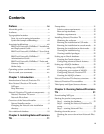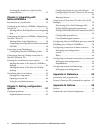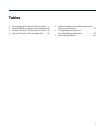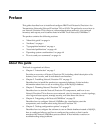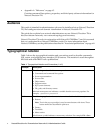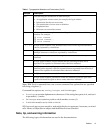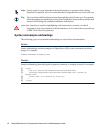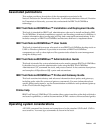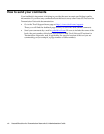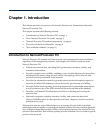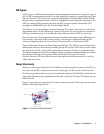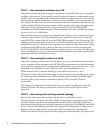
Preface xi
Many IBM Tivoli commands have one or more command line options that are specified
following a hyphen (-).
Command line options are string, integer, or BOOLEAN types:
•A string can contain alphanumeric characters. If the string has spaces in it, enclose it
in quotation (") marks.
•An integer must contain a positive whole number or zero (0).
•A BOOLEAN must be set to TRUE or FALSE.
SQL keywords are not case-sensitive, and might display in uppercase, lowercase, or mixed
case. Names of ObjectServer objects and identifiers are case-sensitive.
Note, tip, and warning information
The following types of information are used in the documentation:
Italic The following are described in an italic font style:
• An application window name; for example, the Login window
• Information that the user must enter
• The introduction of a new term or definition
•Emphasized text
• References to external documents
[1] Code or command examples are occasionally prefixed with a line number in square
brackets. For example:
[1] First command...
[2] Second command...
[3] Third command...
{ a|b } In SQL syntax notation, curly brackets enclose two or more required alternative
choices, separated by vertical bars.
[ ] In SQL syntax notation, square brackets indicate an optional element or clause.
Multiple elements or clauses are separated by vertical bars.
| In SQL syntax notation, vertical bars separate two or more alternative syntax
elements.
... In SQL syntax notation, ellipses indicate that the preceding element can be
repeated. The repetition is unlimited unless otherwise indicated.
,... In SQL syntax notation, ellipses preceded by a comma indicate that the preceding
element can be repeated, with each repeated element separated from the last by a
comma. The repetition is unlimited unless otherwise indicated.
a
In SQL syntax notation, an underlined element indicates a default option.
( ) In SQL syntax notation, parentheses within the statement syntax are part of the
syntax and should be typed as shown unless otherwise indicated.
Table 1. Typographical Notation and Conventions (2 of 2)
Example Description



